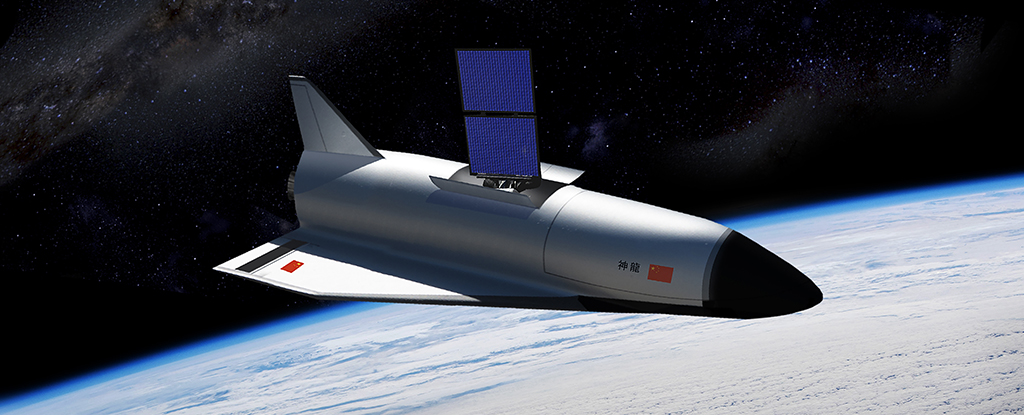Products You May Like
China’s third test mission of a reusable, robotic spacecraft continues to invite speculation by casting into orbit half a dozen small objects, tentatively referred to as ‘wingmen’ by intrigued amateur skywatchers.
Dubbed Shenlong – Chinese for “divine dragon” – the experimental orbital plane was launched from the Jiuquan Satellite Launch Center on Thursday 14 December atop a Long March 2F rocket, before falling into a low orbit similar to that of previous test missions run back in September 2020 and August 2022.
Unidentified objects were tracked in the wake of the spacecraft during those missions as well, speculated by Andrew Jones at SpaceNews to consist of ‘inspector satellites’ purposed with tracking the test vehicle, potentially to assist in its safe return to the surface.
Based on their radio emissions, the objects were likely to be small Chinese-developed Banxing satellites used previously to relay images of other spacecraft.
Four days after its latest launch, Shenlong deployed six objects of its own, designated OBJECT A to F by the satellite-tracking community.
Amateur astronomer Scott Tilley has referred to the objects on X as “mysterious wingmen”. As he explained to Space.com’s Brett Tingley, the emissions from each device present a mix of signals, with only some carrying small amounts of information.
More interesting observations from the Chinese ‘spaceplane’ launch. OBJECT D is also emitting intermittently on S-band using same modulation as OBJECT A. @plugger_lockett in the Perth AU area recorded the data yesterday. 🧵⬇️ pic.twitter.com/iS4CzW3Ti6
— Scott Tilley 🇺🇦 (@coastal8049) December 17, 2023
“OBJECT A’s or nearby emission is reminiscent of earlier Chinese space plane ‘wingman’ emissions in the sense the signal is modulated with a limited amount of data,” Tilley told Tingley in an email.
Conversely, OBJECT D and OBJECT E presented signals without any data, their emissions appearing to act as placeholders. Unlike previous missions, the signals are intermittent, meaning ground observers have had to work together over several days to pull together enough detail.
Though conceding satellite trackers may have missed signals in previous missions if they, too, were brief blips, Tilley is confident there is something a little different about this mission.
“Something we should watch for is close encounters between OBJECT A and OBJECTs D and E. D and E are in fairly elliptical orbits while A is in a near circular orbit,” he told Tingley.
While amateur astronomers around the world share their theories on what China’s mysterious space plane might be up to, the US is no doubt quietly watching on with its own vested interests.
Boeing’s experimental X-37B reusable space plane has a lot in common with China’s Shenlong, not least its secrecy in development.
There are few details on its purpose or capabilities at this stage, beginning as part of NASA’s X-37 project at the end of last century before becoming a US Department of Defense project in 2004.
With another X-37B test flight in the works for December 28, there’s little doubt that two of the world’s largest spacefaring nations are paying close attention to each other’s new toys while keeping their own well-guarded, leaving the rest of the world to guess at what’s transpiring overhead.
